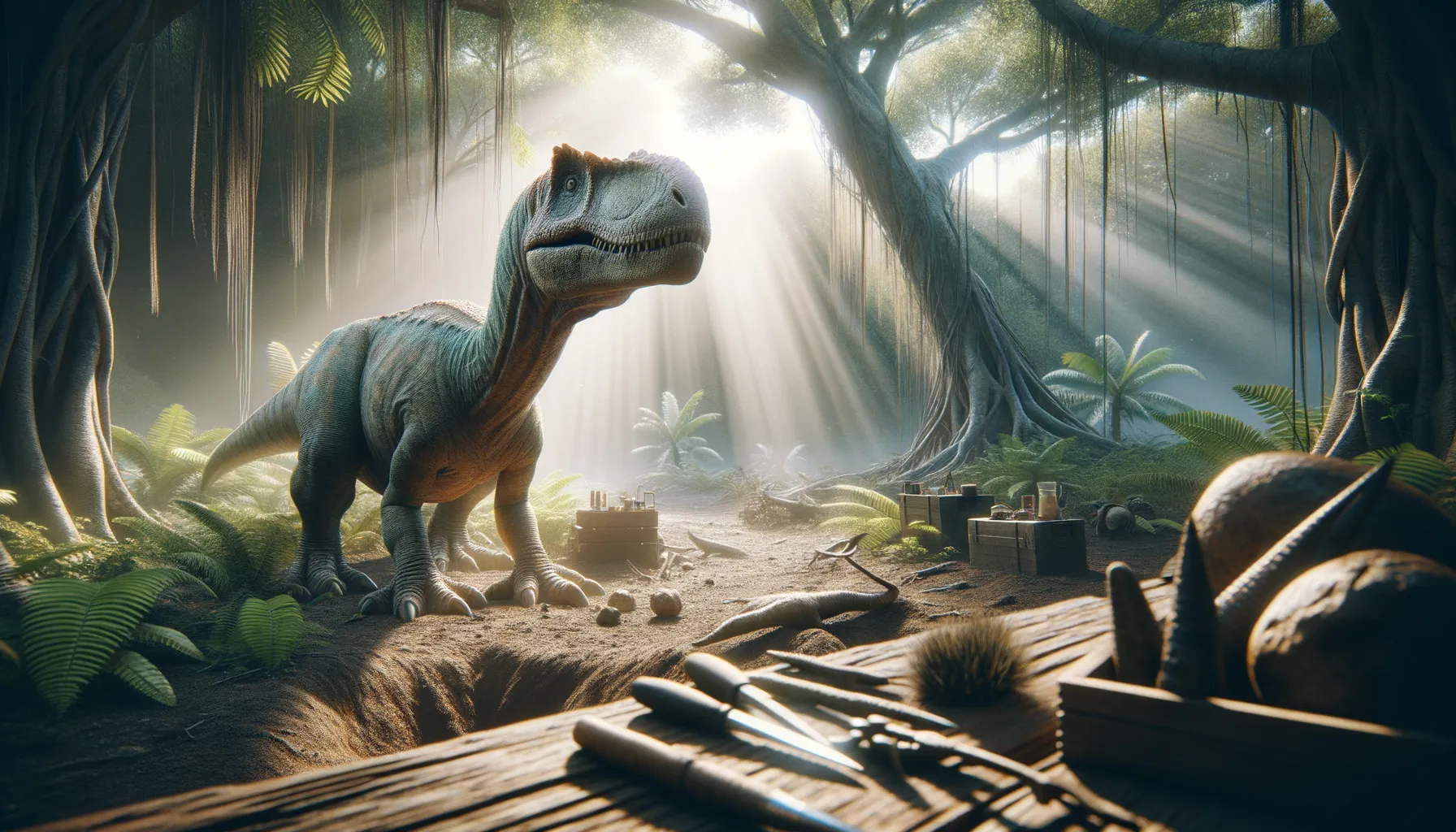
Koreanosaurus
The underground dweller of the Cretaceous!
Period
Cretaceous
Length
Roughly 2.5 meters long.
Height
Approximately 0.6 meters tall at the hip.
Weight
Estimated around 20 to 30 kg.
Koreanosaurus was a relatively small, bipedal herbivore known for its burrowing lifestyle. With its streamlined body and forelimbs adapted for digging, it provides insight into the varied life habits of dinosaurs beyond the commonly perceived large, roaring giants. First unearthed in South Korea, Koreanosaurus adds valuable understanding of the diverse ecosystems that existed during the Cretaceous period.
Diet
Koreanosaurus primarily fed on low-lying plants and vegetation. Its diet consisted mainly of ferns, cycads, and possibly small flowering plants that thrived in its forested habitat.
Hunting
Unlike many dinosaurs, Koreanosaurus did not engage in hunting as it was herbivorous. Its behavior would have centered around foraging for plants, relying on its keen sense of smell to locate food.
Environmental challenges
Living in a lush, forested environment, Koreanosaurus had to navigate dense foliage and competition for food resources. Predators presented a constant threat, leading to its adaptation of burrowing for protection. Seasonal changes might have affected plant availability, requiring it to adapt to varying food sources throughout the year.
Speed
Likely a slow mover, given its robust body.
Lifespan
Estimated to be several decades, similar to other medium-sized dinosaurs.
First discovery
Discovered in South Korea in 2003.
Fun Facts
- Koreanosaurus is named because it was discovered in South Korea, making it special as it's one of the few dinosaurs found in that country.
- This dinosaur was a small, plant-eating dinosaur, measuring about 2.5 meters long, roughly the length of a small car.
- Unlike some of its larger dinosaur cousins, Koreanosaurus likely relied on its speed and agility to escape predators.
- The fossils of Koreanosaurus show that it had strong limbs, suggesting that it might have been good at digging or had a burrowing lifestyle.
- Koreanosaurus lived during the Late Cretaceous period, around 83 to 70 million years ago, which means it roamed the Earth just before the mass extinction that wiped out the dinosaurs.
- The name Koreanosaurus means 'Korean lizard', highlighting its significance as part of South Korea's prehistoric heritage.
- Koreanosaurus was part of a family of dinosaurs known as hadrosauroids, which are often informally called the 'duck-billed dinosaurs.'
Growth and Development
Starting life as small hatchlings, Koreanosaurus likely grew steadily, reaching maturity in a few years. Juveniles would have relied on camouflage and burrowing to avoid predators. As it matured, its robust build suggested that it had few natural predators aside from large carnivores.
Habitat
The environment of Koreanosaurus was likely subtropical with dense forests, providing ample cover and food. Its life mostly revolved around thick undergrowth, which offered protection and resources. Seasonal climate changes would have shaped its day-to-day survival strategies.
Interaction with other species
Koreanosaurus coexisted with other herbivorous dinosaurs, possibly engaging in non-aggressive competition for food. Predation pressure came from larger theropods, which they avoided through their burrowing strategies. The presence of symbiotic relationships with contemporary flora may have benefited both species.
Natural lifespan
Koreanosaurus enjoyed a natural lifespan of several decades, provided it avoided predators.
Reproduction
Koreanosaurus likely reproduced by laying eggs, as with other dinosaurs. Nests were probably hidden in sheltered areas or burrows to protect from predators. Parental care may have involved guarding the nest until hatchlings emerged.
Social behaviour
Koreanosaurus might have lived in small groups, enhancing protection against predators. Social behavior could have included cooperative foraging and digging, although evidence of complex social structures is limited.
Fossil locations
Fossils of Koreanosaurus have been found primarily in South Korea. The initial discovery in the Republic of Korea in 2003 led to its naming and classification. These fossils provide crucial insights into the regional diversity of dinosaur species during the Cretaceous.
